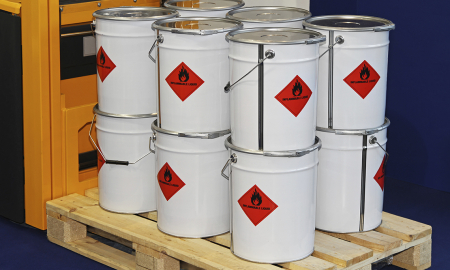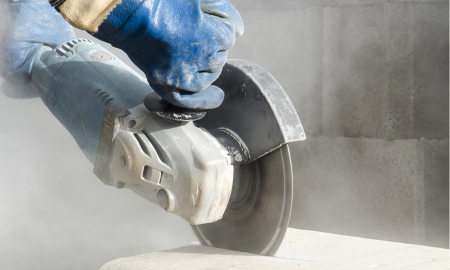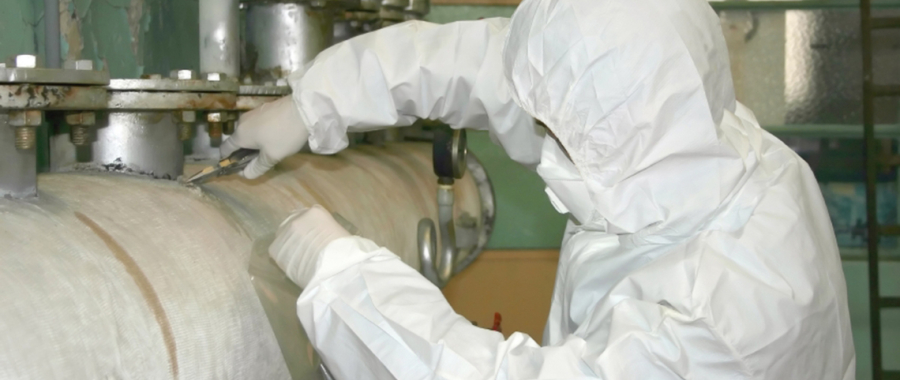Occupational Exposure Limits – Does One Size Fit All?
The generic term ‘Occupational Exposure Limit’ refers to an established, acceptable maximum concentration of an airborne hazardous substance to which employees can be repeatedly exposed at work, and this serves as a valuable tool in assessing and managing risk.
Let us imagine two employees working in an environment where they are potentially exposed to various harmful chemical and physical agents. One worker is relatively young, fit and healthy, while the other is twenty years older, physically out of shape, smoked and has additional underlying long-term health issues. With this in mind, let us also assume that the pair of them are doing the exact same job in the exact same way.
As part of a workplace assessment, their health and safety manager decides that there might be an issue with ‘Substance X’ becoming airborne in their work area, and that these two workers might possibly be exposed to harmful levels as a result. An industrial hygienist attends the site and carries out some personal monitoring to determine their exposures by inhalation. The sample results come back, and, unsurprisingly, the concentration values are quite similar – after all, the two workers are doing an identical job in the same area using the same procedure.
More sampling is done and a statistically robust average exposure value is developed, with results staying broadly comparable between the two workers. Despite this value being a third or even half of the Workplace Exposure Limit (WEL) and therefore not being demonstrably breached, exposures are still considered to be ‘significant’ for that substance.
Levels of exposure
The generic term ‘Occupational Exposure Limit’ refers to an established, acceptable maximum concentration of an airborne hazardous substance to which employees can be repeatedly exposed at work, and this serves as a valuable tool in assessing and managing risk. In the UK, these are referred to as Workplace Exposure Limits. The idea is that, at these levels or below, workers will not suffer harm due to the hazardous properties associated with that particular substance. In the USA, their WEL equivalents – Threshold Limit Values (TLV) – are described as ‘the level of exposure that the typical worker can experience without adverse health effects….based on the available information’. But what do they mean by ‘typical’ worker?
Daily exposure to a significant fraction of an established exposure limit, which has been developed from good science and peer-reviewed, will almost certainly not harm a 30-something, healthy and fit worker. However, a 60-year-old, overweight, unfit, heavy-smoking colleague who has high blood pressure and lungs that have experienced decades of cigarette smoke and industrial activity has a much higher risk of harm.
This is a highly simplified example designed to illustrate the point that exposure limits appear to be a ‘one-size-fits-all’ number which disregards age, weight, health and social habits. Other more politically sensitive criteria, such as gender or racial make-up, may also be factors in determining physiological responses to exposure levels of different harmful agents. Despite the assertion that WELs are conservative limits and that all or ‘typical’ workers will not be harmed when regularly exposed at or below these concentrations, is it possible that some susceptible workers may still be at risk of harm at these ‘acceptable’ levels?
Many employers undertake health surveillance for their staff, and this may result in identifying ‘at risk’ workers who then have their job role or procedures altered to help reduce that risk. However, this is likely to be a highly intensive, time-consuming process, and while it may include several objective measurements, a final decision on fitness to work may be a subjective one made by medical personnel or possibly even by non-medical management. Furthermore, Occupational Hygiene sampling data may be of limited use when an employer or their medical advisors are considering the level of risk to workers. The results might simply indicate that a worker’s exposure to the substance of interest was ‘above’ or ‘below’ a regulated hygiene limit, and do not consider the worker’s personal circumstances.
Weighting factors
There is an argument for the development of weighting factors for exposure limits that go some way to taking individual features into account. The debilitating effects linked to factors such as weight, age and smoking habits may be relevant when considering an individual’s response to exposure to specific substances. While derived weighting factors may be modest, they could go some way to providing a more appropriate limit tailored to individuals.
Weighting is not a new idea as it is used elsewhere in the occupational health and hygiene sector. Audiometric testing is carried out to assess hearing loss and decide if a warning level or a more serious referral level has been reached. This is grouped into five-year age brackets to take into account the loss of hearing acuity as people get older. For example, an aggregate hearing loss (across the five test frequencies) of around 140 decibels (dB) for a 32-year-old man would be comfortably above the referral level, but would not be close to even reaching a warning level for a 52-year-old man – as he is older, and it is expected that his hearing will have deteriorated due to age. However, the same aggregate hearing loss of 140 dB would trigger a referral for female workers up to and including those in the 55-59 age bracket. Therefore, audiometric testing considers both age and gender when weighting is applied.
When considering the issue of thermal stress upon a worker, measurement values are weighted to take into account the personal factors of what the worker is wearing and what they are doing. For instance, a person engaged in intense physical activity while wearing additional clothing or protective equipment will, of course, feel hotter than when they are sat at a desk or in a mess room in their everyday clothing. However, weighting for heat stress assessment does not factor in other key personal factors such as age, weight, fitness and gender, and there is a strong argument that some of these could affect response to extreme heat or cold.
Consideration of these factors in relation to developing additional weightings could prove politically difficult. However, an employer ultimately needs to determine an individual’s level of fitness to perform a task, and a wider ranging weighting tool or algorithm will help to ease the assessment process.
This argument naturally extends to other harmful agents in the workplace. The HSE recommend lighting levels for different types of task, ranging from being able to move about safely through to highly detailed work that may also include a need for colour recognition. While this is useful, it does not consider the age of workers. The muscles that control pupil size weaken as the body ages, with a 65-year-old requiring about three times more light than a 25-year-old to read comfortably. There is a case to be made for recommended lighting levels within an occupational assessment being weighted to better account for the ageing process.
These brief points are designed to raise the issue of weighting and do not try to provide any in-depth or specific solutions to what would be a series of potentially complex and politically difficult processes, each involving detailed research in order to derive a feasible and workable number. As one size does not fit all, the use of carefully derived weighting factors within occupational workplace monitoring could therefore be expanded to more accurately assess individual risk.
If you would like to discover more about SOCOTEC’s Occupational Hygiene division and the services they provide, click the link or contact us.





Add new comment